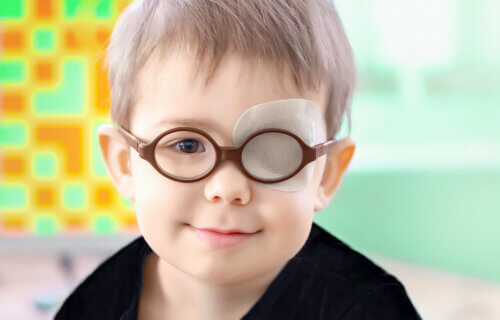🔑 Key Findings:
- 82% of children with a lazy eye suffer reduced vision in that eye as an adult.
- Having a lazy eye displayed a connection to heart attacks as an adult.
- Those with childhood amblyopia were over 25% more likely to develop hypertension and diabetes.
LONDON — For children dealing with amblyopia (or “lazy eye”), a new study is now linking the condition to an increased risk of several health problems, including hypertension, heart attack, obesity, and diabetes later in life. Although scientists from University College London explain that their new work describes a surprising correlation between eye problems and ill health in adulthood, they are still searching for a causal relationship.
Lazy eye occurs when the vision in one eye does not develop properly and can stem from a squint or being far-sighted. Classified as a neurodevelopmental condition that stems from a breakdown in how the brain and the eye work together, amblyopia makes it harder for the brain to properly process visual signals from the affected eye. Since it usually only results in reduced vision in one eye, many young kids don’t notice that anything is wrong. Such cases are only diagnosed through the vision test typically performed at four to five years of age.
During this project, researchers analyzed data spanning over 126,000 participants who had eye exams (ages 40 to 69 years-old) provided by the UK Biobank. During the recruitment stage, all participants answered if they underwent treatment for amblyopia during childhood and if they still had the condition in adulthood. Everyone was also asked about any relevant medical diagnoses of diabetes, high blood pressure, or cardio/cerebrovascular disease (angina, heart attack, stroke).
Meanwhile, study authors also measured BMI (body mass index), blood glucose, and cholesterol levels and tracked mortality outcomes. This method led to the confirmation that among 3,238 participants who reported having a lazy eye as a child, 82.2 percent live with persistent reduced vision in one eye as an adult.
Additionally, participants who had amblyopia as a child showed 29 percent higher chances of diabetes, 25 percent higher odds of having hypertension, and 16 percent higher odds of obesity. Such individuals are also more likely to suffer a heart attack. This held true even after researchers accounted for potentially influential additional risk factors (other disease, ethnicity, social class).

This increased risk of health problems was present not only among people whose vision problems persisted, but also to a lesser extent among participants with amblyopia as a child and 20/20 vision as an adult – although the correlation was not as robust.
“Amblyopia is an eye condition affecting up to four in 100 children. In the UK, all children are supposed to have vision screening before the age of five, to ensure a prompt diagnosis and relevant ophthalmic treatment,” says corresponding author, Professor Jugnoo Rahi (UCL Great Ormond Street Institute for Child Health, UCL Institute of Ophthalmology and Great Ormond Street Hospital), in a media release.
“It is rare to have a ‘marker’ in childhood that is associated with increased risk of serious disease in adult life, and also one that is measured and known for every child – because of population screening. The large numbers of affected children and their families, may want to think of our findings as an extra incentive for trying to achieve healthy lifestyles from childhood.”
About two percent of all children in the U.S. deal with a lazy eye. It is the most common cause of partial or total blindness in one eye in the country. If children aren’t treated by age eight, their vision is far less likely to be corrected, according to NVision.
“Vision and the eyes are sentinels for overall health – whether heart disease or metabolic disfunction, they are intimately linked with other organ systems. This is one of the reasons why we screen for good vision in both eyes,” concludes first author, Dr. Siegfried Wagner (UCL Institute of Ophthalmology and Moorfields Eye Hospital).
“We emphasize that our research does not show a causal relationship between amblyopia and ill health in adulthood. Our research means that the ‘average’ adult who had amblyopia as a child is more likely to develop these disorders than the ‘average’ adult who did not have amblyopia. The findings don’t mean that every child with amblyopia will inevitably develop cardio-metabolic disorders in adult life.”
The study is published in the journal EClinicalMedicine.

I have amblyopia and it has always been very difficult to read a book and finish it. I don’t know how I graduated from college. I am over 60 years old.
Well I certainly at 70 have had no serious illnesses and don’t expect to either. These little studies are just achieving to frighten people. Please STOP ✋️